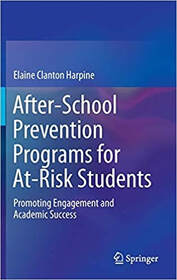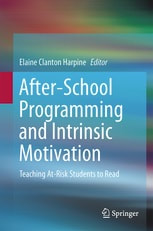"Has trouble understanding and/or following verbal or written directions.
- Loses her place while reading.
- Confuses words that look similar when reading. For example: word/world.
- Reverses letter order when reading. For examples, reads "was" as "saw."
- Avoids reading or reads under protest.
- Fails to follow tasks through to completion, such as schoolwork, homework or chores.
- Tries to avoid activities that call for long periods of concentration."
Wrong. These are not necessarily signs of a learning disability. They can also be signs of a poor teaching method, inadequate teaching curriculum, poor classroom management…. The list can go on and on. Let’s go to some reputable sources on the Internet and find a real list of learning disabilities in reading.
In a Psychology Today article written for the general public, authors give a definition and a list of learning disabilities:
"Learning disabilities are disorders that affect one's ability in the domains of spoken or written language, mathematical calculation, attention, or the coordination of movements. They can occur in young children but are usually not recognized until a child reaches school age. An estimated 8 to 10 percent of U.S. children have some type of learning disability….
"Some specific categories of learning disabilities include:
- Dyslexia, which causes difficulties with word recognition, spelling, and comprehension
- Dysgraphia, which results in impaired handwriting, impaired spelling, or both
- Dyscalculia, which affects the ability to learn arithmetic and mathematics
- Nonverbal Learning Disorder, marked by trouble receiving and interpreting nonverbal forms of communication such as body language and facial expressions
- Apraxia of speech, which involves difficulty saying what one intends to say
- Central Auditory Processing Disorder, which involves difficulty with recognizing and interpreting sounds
"For diagnosis of a Specific Learning Disorder, the affected skills must be markedly and measurably below what is expected for the individual's age, and the difficulty must significantly interfere with performance or daily activities."
There is a difference between poor reading habits and dyslexia just as there is a difference between sloppy handwriting and dysgraphia. There is also a major difference between a child losing their place while they are reading and the child having dyslexia.
Children often refuse to read or read only under protest not because they have a learning disability but because they have not been properly taught how to read. Every day, I encounter more and more students who have been taught using balanced literacy, systematic phonics, or even whole language who are struggling, sometimes even failing, and yes, occasionally refusing to read. These students do not necessarily have a learning disability. Some do, but most just need a new approach to teaching them how to read.
That is why we have been so successful with the vowel clustering teaching method. Vowel clustering is a completely and totally new approach to teaching reading. Vowel clustering is nothing like phonics or whole language. Vowel clustering helps students relate the words they are reading to the oral language system in the brain. There is no memorization, no sight word lists, and no phonics rules.
Some of our success stories have been:
- A student who failed for nine straight years in public school is now reading.
- A student diagnosed with ADHD and failing in reading moved up two grade levels in one year.
- A student diagnosed with dyslexia and whose parents tried everything, including expensive private one-on-one systematic phonics tutoring, learned to read, and moved up to beginning chapter books in one year.
- Six children who entered the program reading at the pre-K level ended the year reading at the 2nd grade reading level. Only one child in the group was a first grader.
- One student started at the pre-primer level (pre-K) and ended the year at the third-grade reading level while a second grader started the year reading below first grade and ended at the fourth-grade level.
- Three students moved up four grade levels in reading, four students moved up three grade levels in reading, and eight students moved up two grade levels in reading in one year.
- A fifth-grade student moved up from the 3rd grade reading level to the 6th grade reading level in only five months using the vowel clustering teaching method.
So, be careful as you read on the Internet. Be careful when you label children or identify learning disabilities. Be careful not to blame children for not learning when it is often a failure to teach. No, I’m not blaming teachers. I am blaming administrators, public school systems, and anyone and everyone who maintains teaching methods that have been proven not to work. Whole language, systematic phonics, and balanced literacy have been proved to be failed approaches to teaching reading. It’s time for a change.


 RSS Feed
RSS Feed
